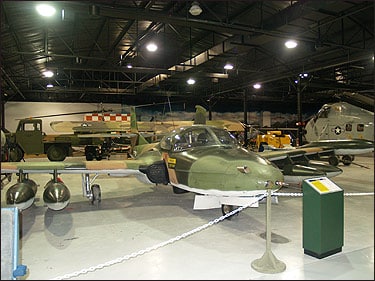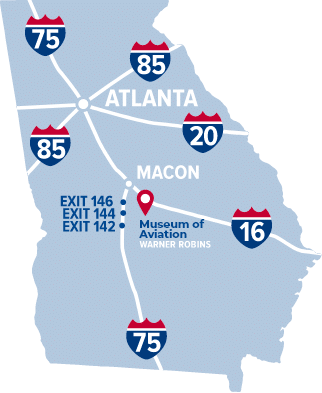The A-37A was modified from the standard T-37B primary trainer to evaluate the design as a counterinsurgency (COIN) attack/reconnaissance aircraft. It was first flown in September 1963. Modifications included installation of two General Electric J85 engines replacing the T-37’s J69s which doubled the thrust, underwing stores pylons and installation of a 7.62 mm Mini-gun in the aircraft’s nose. Thirty-nine T-37Bs were rebuilt into A-37As. The follow-on version of the A-37B with air refueling capability installed totaled 577 aircraft.
The A-37 was used with great success in Southeast Asia. The South Vietnamese Air Force was also equipped with the Dragonfly. The aircraft continued in USAF service with the Air National Guard and Air Force Reserve until the 1980s.
Warner Robins Air Logistics Center was responsible for all communications, fire control and gun systems for the A-37. The A-37A on display was delivered from the Cessna factory after rebuild to the 3rd Tactical Fighter Wing at Bien Hoa Air Base, South Vietnam in August 1967. After flying numerous combat missions, it returned to the United States in 1970. It served at various locations before being converted to a ground instructional airframe in 1974. It was transferred to the Museum and recovered by the 2955th Combat Logistics Support Squadron in 1991.













